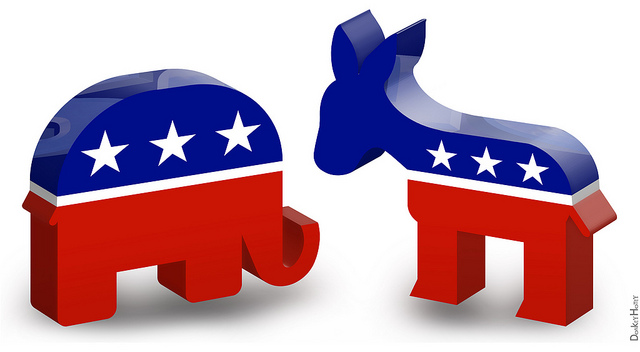Juan Salamanca/Staff Writer
The 2016 third-party movement is dangerously ignorant of history and the political system of the United States.
Unfortunately, a writer for The Beacon wrote a piece on the subject that was also subject to this bit of ignorance: it calls for the conceptualization of the United States as a multi-party system. The fundamental reason why this argument is so misguided is that it confuses consequence with process: simply vote away the two-party system and it’s gone.
The big problem with this conclusion is that the American political system is designed under the framework of single-member district plurality; that is, elections are decided by who holds the most votes rather than the majority of votes.
While this may seem like some arcane technical argument, it actually makes a huge difference in electoral systems. The United States system could theoretically have 10 candidates running for president and the one who would win would be the one with 11 percent of the votes.
This condition mathematically results in a two-party system; ideologically-aligned fringe parties, tired of always losing elections to ideologies unlike their own, coalesce into increasingly large parties to at least ensure a candidate leaning in their direction wins. Eventually, all ideological differences on both left and right are more or less flattened into two big tent parties.
While party shifts have historically happened in the United States, it has been rare and has simply resulted in a reproduction of the two-party system. A third party, especially strongly ideological ones, such as the Greens or the Libertarians, wouldn’t have a chance to make a difference even if they broke out with 20 percent of the vote across the board, because they would still result in having zero power.
If the third party movement is serious about creating a more inclusive polity in the U.S., it must first begin by taking aim at the fundamental political systems that build this government.
The problem, however, is that people are lazy. A classic example is this idea that a vote is anything more than a preference between two candidates in the United States.
Trying to change to a more parliamentary-style multi-party system will require years of organizing, hard work and fighting for things like constitutional amendments. It won’t happen in the course of a single election and it won’t happen immediately.
Sorry, millennials, you can’t just choose your way out of politics like it’s a bad movie on Netflix. But you are right that this system is wrong and untenable and creates incredibly unfair outcomes. That’s why it’s time to get to work, the right way.
DISCLAIMER:
The opinions presented within this page do not represent the views of FIU Student Media Editorial Board. These views are separate from editorials and reflect individual perspectives of contributing writers and/or members of the University community.
Image retrieved from Flickr.






Be the first to comment on "Donkeys and Elephants: The problem with a two-party system"